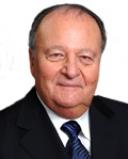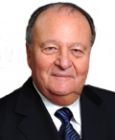
Bullying
Part B: Bullies & Victims - Types I, II and III
Analyzing Bullying in Schools, Gangs, Groups, Corporations, and Nations
Posted March 17, 2011
Three Basic Origins of Bullying - Especially The Hidden ADHD/Dyslexia Type III Link Between Victims & Bullies - and Its "Cure"
In a prior updated commentary (Psychology Today), Dr. Harold Levinson, for the very first time, classified bullying mechanisms and determinants into three general Types: Type I - Environmental/Learned, Type II - Emotional/Neurotic and Type III - Somatic/Physiological and Neurophysiological - especially a major subcategory involving a signal-scrambling dysfunction within the inner-ear and its supercomputer, the cerebellum.
The latter impairment was discovered by Dr. Levinson to result in a wide range of disorders, including LD, Dyslexia, ADHD, Dyspraxia, Phobias,... and which often respond rapidly and favorably to a novel medical treatment.
According to Dr. Levinson, Type I Bullying "learned" by children at home, school and elsewhere in most cases has a good prognosis. Type II Bullying results from abusive/abused mechanisms that are internalized into an individual's emotional and behavioral nature, usually by experiencing and identifying with severe and repetitive violence at home. The latter results in an abnormal exaggeration of aggressive drives varying from intense to suppressed or passive - often depending on subconscious identification with the abuser or abused. Needless to say, the outcome in Type II is guarded unless early and intense psychological intervention and therapy is provided. And in Type III "bullying" there is a primary aggressive "somatic (physiological/chemical/neurophysiological) compliance" predisposing children to bullying/bullied mechanisms, even in the absence of significant Type I and II determinants.
As previously noted a major subtype III of bullying may often be due to a hidden inner-ear/cerebellar dysfunction resulting in LD, Dyslexia, ADD... Mood/Anxiety disorders and impaired self-esteem. Needless to say, this complex fallout of emotional and behavioral issues require clear understanding and expert treatment of all its many and varied devastating secondary symptoms. Not infrequently, rapid improvements in Type III bullying symptoms may occur after treatment with inner-ear-enhancing medication.
In fact, Dr. Levinson broadens the currently reported clinical concept and dimensions of childhood bullying so that the readers can better understand its multidimensional nature and insidious manifestations in all areas of adult, group and even political life - as well as its underlying determining mechanism.
According to Dr. Levinson "bullying" is also a very frequent adult manifestation occurring at home and at work, although the terminology may change to abusers-abused. Often bullying has underlying control-controlling as well as sadistic-masochistic mechanisms, especially when inner aggressive and sexual drives become fused and a perverted pleasure is derived from abusing and/or being abused.
Similarly, group or "gang" bullying and determining mechanisms may also underlie social, economic, political and even military decisions - where ethnic/social groups, corporations and even nations try to control/expand their power at the expense of weaker ones.
Indeed, according to Dr. Levinson, there may be even a genetic determinant to bullying derived from our animal ancestry and survival of the fittest to dominate and/or become dominant - further explaining what appears to be a universality of this mechanism throughout mankind.
Hopefully this deeper and broader understanding of "bullying" will lead to early and better treatment - and thus enhance mitigation and prevention in both children and adults as well as within and between groups, corporations and even nations.

